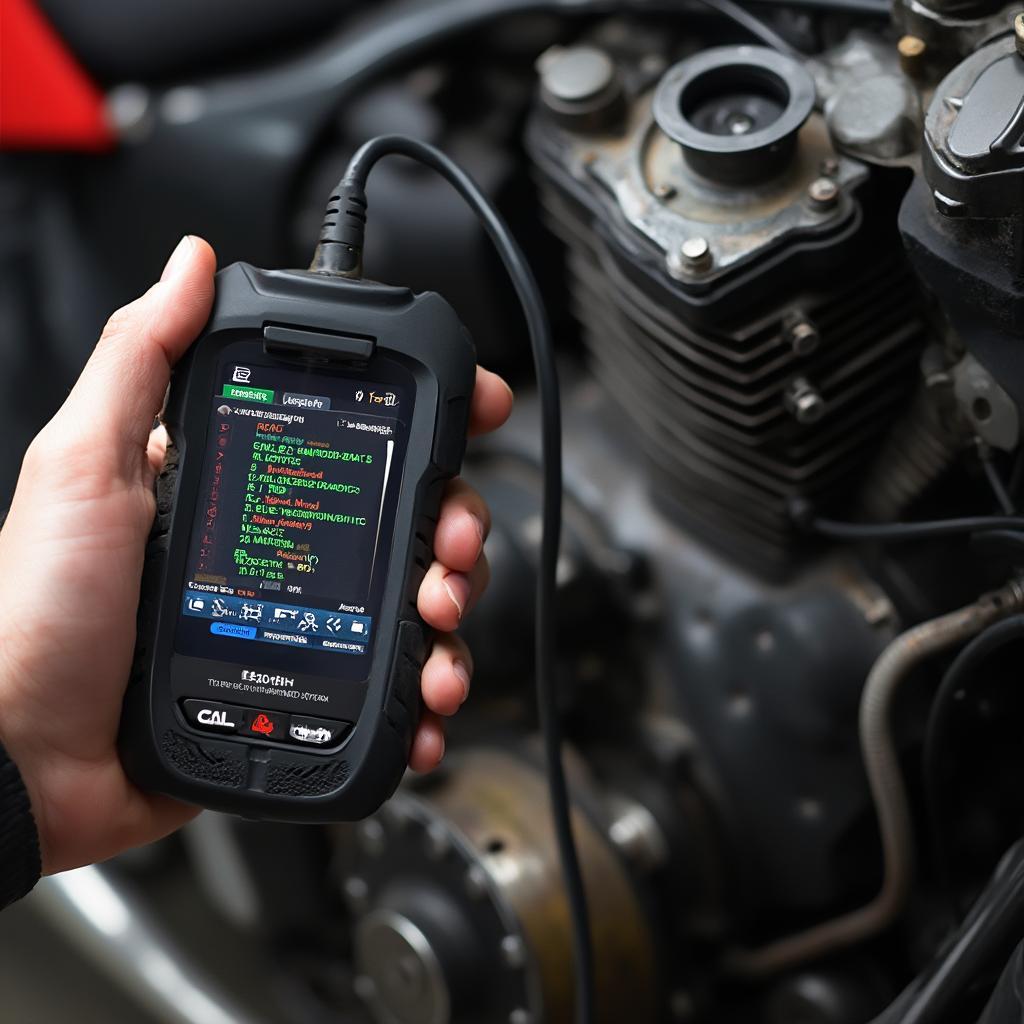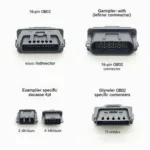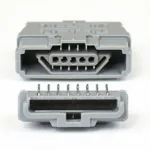An OBD2 motorcycle scanner is a crucial tool for any motorcycle enthusiast, whether a seasoned mechanic or a DIYer. It provides valuable insights into your bike’s performance, allowing you to diagnose issues, maintain optimal running conditions, and potentially save money on costly repairs. This guide will delve into the world of OBD2 motorcycle scanners, exploring their functionalities, benefits, and how to choose the right one for your needs.
Choosing the right obd2 motorcycle scanner can be a daunting task with so many options available. Understanding the different types and functionalities is key to making an informed decision. This comprehensive guide provides everything you need to know. For those interested in a broader perspective, see our guide on car and motorcycle obd2 scanner and programmer.
Understanding OBD2 Motorcycle Scanners
OBD2, or On-Board Diagnostics II, is a standardized system that allows external devices to access a vehicle’s diagnostic data. While initially designed for cars, OBD2 technology has also been adopted by motorcycle manufacturers, providing a consistent platform for troubleshooting and maintenance. An OBD2 motorcycle scanner acts as the interface between your bike’s computer and you, translating complex data into readable information.
Why You Need an OBD2 Motorcycle Scanner
An OBD2 motorcycle scanner can empower you to take control of your bike’s maintenance and diagnose problems efficiently. By reading and interpreting diagnostic trouble codes (DTCs), you can pinpoint the source of issues, saving time and money on unnecessary repairs. Additionally, monitoring live data like engine temperature, RPM, and fuel pressure can help you optimize performance and fuel efficiency.
Choosing the Right OBD2 Motorcycle Scanner
Selecting the ideal OBD2 motorcycle scanner depends on your specific needs and budget. Basic code readers are affordable and offer essential functionality, while more advanced scan tools provide in-depth data analysis, live data streaming, and even bi-directional control, allowing you to test components. Considering factors like compatibility with your motorcycle’s make and model, software features, and user interface will ensure you make the right choice. Need a specific adapter for your Harley? We’ve got you covered with the harley obd2 adapter 6 pin to 17 pjn scanner.
Types of OBD2 Motorcycle Scanners
Several types of OBD2 motorcycle scanners cater to varying needs. These include:
- Code Readers: These basic scanners read and clear DTCs, providing a starting point for diagnosis.
- Scan Tools: Offer more advanced features, including live data streaming, freeze-frame data, and enhanced diagnostic capabilities.
- Professional Scanners: These high-end tools are designed for professional mechanics and offer comprehensive diagnostic functionality, including bi-directional control and advanced programming capabilities. For Harley Davidson owners, we offer specific information on obd2 scanner harley davidson.
What can an OBD2 scanner tell you about a motorcycle?
An OBD2 scanner can provide a wealth of information about your motorcycle’s health and performance, such as diagnostic trouble codes, engine RPM, coolant temperature, fuel pressure, and more. This data allows you to pinpoint issues, optimize performance, and ensure your bike is running smoothly. You can also find useful resources for obd2 scanner for yamaha motorcycles.
How do I use an OBD2 scanner on a motorcycle?
Using an OBD2 scanner on a motorcycle is generally straightforward. Locate your motorcycle’s diagnostic port, usually under the seat or near the handlebars. Plug in the scanner, turn on the ignition, and follow the prompts on the scanner’s screen to access and interpret the data. Looking for a specific brand? Check out our page on delphi obd2 scanner for motorcycles.
Conclusion
An obd2 motorcycle scanner is an invaluable tool for any motorcycle owner. Whether you’re a professional mechanic or a DIY enthusiast, investing in a quality scanner can empower you to take control of your bike’s maintenance, diagnose issues efficiently, and optimize its performance.
FAQ
- Are all motorcycles OBD2 compliant? Not all motorcycles are OBD2 compliant, primarily older models.
- Can I use a car OBD2 scanner on a motorcycle? While some car scanners may work, it’s recommended to use a scanner specifically designed for motorcycles.
- How often should I use an OBD2 scanner? Regularly scanning your motorcycle, especially before and after long rides, can help identify potential problems early on.
- What do the codes on an OBD2 scanner mean? The codes correspond to specific diagnostic trouble codes (DTCs) that indicate potential issues with various systems.
- Where can I find more information on specific DTCs? You can typically find information on DTCs online or in your motorcycle’s service manual.
- Are there wireless obd2 scanners for motorcycles? Yes, many wireless OBD2 scanners are available, offering greater flexibility and convenience.
- Can an OBD2 scanner clear engine codes? Yes, most OBD2 scanners have the functionality to clear stored engine codes after addressing the underlying issue.
Common OBD2 Scanner Questions
- My OBD2 scanner isn’t connecting to my motorcycle. What should I do? First, check the compatibility of your scanner with your motorcycle’s make and model. Ensure the ignition is on and the scanner is properly connected to the diagnostic port.
- I’m getting a code I don’t understand. Where can I find more information? Refer to your motorcycle’s service manual or search online for information on specific DTCs.
- Can an OBD2 scanner tell me when my next service is due? While an OBD2 scanner can provide information on your bike’s current condition, it typically doesn’t track service intervals.
Further Resources and Questions
For more in-depth information on OBD2 scanners and related topics, check out our other articles: [How to use an OBD2 scanner on a specific motorcycle model], [Troubleshooting common OBD2 scanner issues], [Understanding advanced OBD2 scanner features].
Need support? Contact us via WhatsApp: +1(641)206-8880, Email: [email protected] or visit us at 789 Elm Street, San Francisco, CA 94102, USA. We offer 24/7 customer support.


